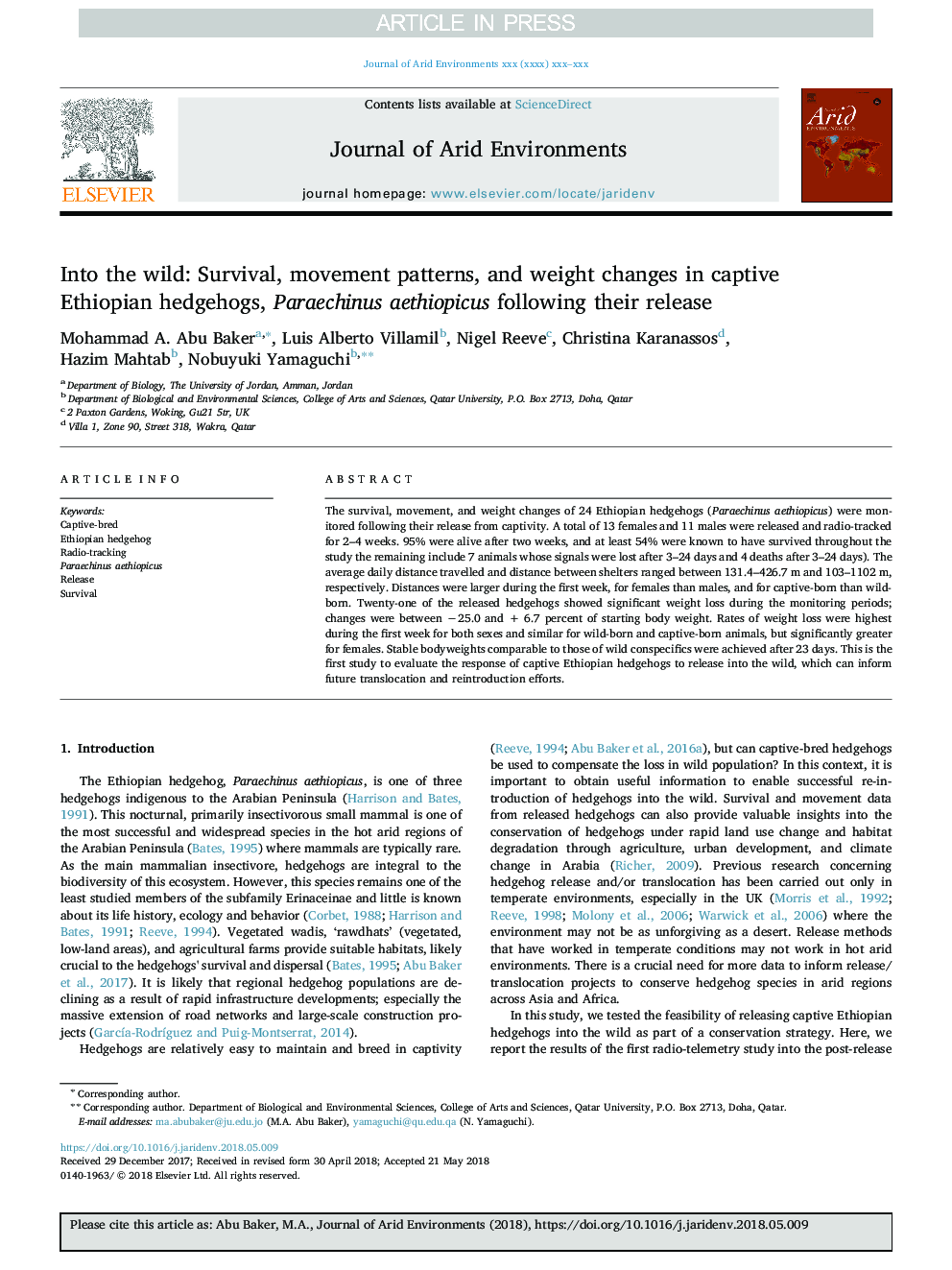| Article ID | Journal | Published Year | Pages | File Type |
|---|---|---|---|---|
| 8965889 | Journal of Arid Environments | 2018 | 4 Pages |
Abstract
The survival, movement, and weight changes of 24 Ethiopian hedgehogs (Paraechinus aethiopicus) were monitored following their release from captivity. A total of 13 females and 11 males were released and radio-tracked for 2-4 weeks. 95% were alive after two weeks, and at least 54% were known to have survived throughout the study the remaining include 7 animals whose signals were lost after 3-24 days and 4 deaths after 3-24 days). The average daily distance travelled and distance between shelters ranged between 131.4-426.7 m and 103-1102 m, respectively. Distances were larger during the first week, for females than males, and for captive-born than wild-born. Twenty-one of the released hedgehogs showed significant weight loss during the monitoring periods; changes were between â25.0 and + 6.7 percent of starting body weight. Rates of weight loss were highest during the first week for both sexes and similar for wild-born and captive-born animals, but significantly greater for females. Stable bodyweights comparable to those of wild conspecifics were achieved after 23 days. This is the first study to evaluate the response of captive Ethiopian hedgehogs to release into the wild, which can inform future translocation and reintroduction efforts.
Related Topics
Physical Sciences and Engineering
Earth and Planetary Sciences
Earth-Surface Processes
Authors
Mohammad A. Abu Baker, Luis Alberto Villamil, Nigel Reeve, Christina Karanassos, Hazim Mahtab, Nobuyuki Yamaguchi,
